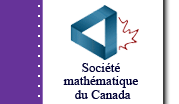|
GRADE 9
UNIT: Math - Ratio and Proportion; Social Studies - Relationships with the Environment
THEME: Human Face of Mathematics - Mathematics in Aboriginal Culture
EQUIPMENT
- atlatl and dart of various lengths (For example 0.5m, 1 m, 1.5 m, 2 m)
- pylon (or other easily seen target that cannot damage or be damaged by the dart)
- measuring tape
- coloured tape
- distance & speed chart
- calculator
- computers with a spreadsheet program
PREREQUISITE KNOWLEDGE:
Math - Ratio and Proportion
R-1 solve word problems involving rates and ratios
R-8 compare ratios and rates
Calculate velocity
LEARNING OUTCOMES:
Math - Ratio and Proportion
R-4 construct ratios and rates from real-life examples
Social Studies - Relationships with the Environment
- Know the traditional world view of Aboriginal peoples with regards to the environment.
- Compare various world views of Canadians in general with regard to the environment.
- Compare Aboriginal peoples' traditional views toward the environment with current attitudes on local or global environmental issues.
- Know scientific and technological components of cultures:
- shelter
- tools
- crafts
- transportation
- clothing
- weapons
Teacher Set Up
- Using the coloured tape, mark off a circle with a diameter of 2 m and a throw line about 10 m from the perimeter of the circle. Place the pylon in the centre of the circle
- Divide the class into groups of no less than 4. For each group you will need one student to throw the dart, one student to measure the distance thrown, one student to time the flight of the dart and another to record the data. One student from each group will throw the dart for the sake of consistency.
Student Instructions
Background Information
- Research the weapons of the Aboriginal people pre and post contact.
- Describe the effect on the animal population and Aboriginal way of life when each weapon was introduced.
Hypotheses
- After your teacher demonstrates how to use the atlatl, create a hypotheses on which length of dart will be able to travel the farthest, be the most accurate and will travel the fastest.
Speed of the Dart
- After your teacher demonstrates how to use the atlatl, create a hypotheses on which length of dart they think will travel the fastest.
- Record the distance and time traveled for each length.
- Time the dart from the time it leaves the atlatl until it lands on the ground.
- Throw the shortest dart about 5 times each as far as possible, not crossing the line.
- Measure each throw from the line to see how far the dart traveled.
- Repeat for each length of dart.
Data Analysis
- Calculate the speed for each throw
- Determine which length of dart traveled the fastest.
- Compare your results to your hypotheses.
- Represent data graphically from a spreadsheet by choosing the appropriate graph type. Justify the type of graph you used.
- Determine which dart length had traveled the fastest.
- As a group answer the following questions:
How does the physical attributes of the person throwing the atlatl effect the experiment?
What other factors would effect the experiment?
How could the results differ for different people throwing the dart?
Closure
- As a class, form conjectures as why different throwers may have had different results and how the experiment could be changed to have more accurate results.
- Discuss the following quote:
The atlatl and dart is truly the natural weapon system of the human race. When humans used the atlatl, we were in balance with nature. We didn’t take more from the environment than what the environment could replace itself. -Dr William Robert Perkins, Atlatl researcher
Lessons for Atlatl Users with Some Experience - Grade 9 PDF
Lessons for Beginner Atlatl Users - Grade 9
Atlatl Home Page
|

